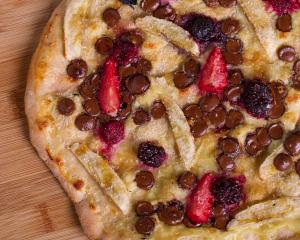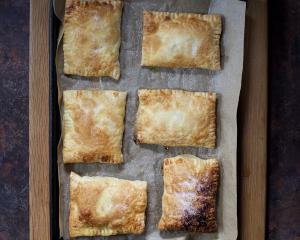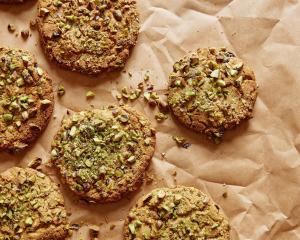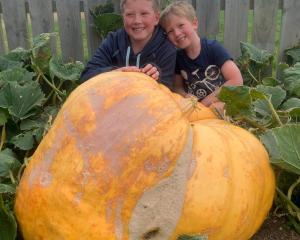One of the most respected food historians and cookery writers, author of A Book of Middle Eastern Food and The Book of Jewish Food as well as numerous others on Mediterranean food, she has recently published The Food of Spain (Penguin).
Like her other major works, it is not a glossy cookbook although there are enticing photographs, but a work of scholarship, history and meticulous research, as well as stories and anecdotes and wonderful, practical, and above all, authentic, recipes.
"Spain's signature tune is the sofrito of fried onion and tomato to which garlic and green pepper are often added. The bits of chopped cured ham that find their way into most dishes; the chorizo and blood sausage that feature together in bean and chickpea stews; the wine or sherry and the brandy that go together in sauces - these are all among its themes.
"The picada, a ground paste of nuts crushed with garlic and fried bread tells you the dish is Catalan.
"The gentle flavour of saffron tells you that you are on the Mediterranean coast or perhaps in the south. Pimenton (Spanish paprika) or the faint aroma of grated lemon zest and cinnamon tells you that a dish is Spanish," she says in the introduction.
Spanish cuisine is an amalgam of many people who have inhabited and influenced the culture of the Iberian Peninsula (the Romans and Visigoths, the Moors, the Jews), the exotic new vegetables the conquistadors brought home from the New World - tomatoes, potatoes, peppers, maize, beans, pumpkins, peanuts, avocados, chocolate and vanilla - and later French cuisine. There was the influence of the aristocracy, who ate a lot of meat and game, the peasants, who ate beans and vegetables, and the monasteries, which developed many grand and Lenten dishes, as well as delicate pastries.
The varied geography - rainy mountainous zones in northern Spain, the dry interior, the Mediterranean, and the Pyrenees - all developed different cooking styles, and these are illustrated by numerous recipes in this stylishly produced cookbook.
Roden's own origins hark back to Spain, for her family were Sephardic Jews who left Spain at the time of the reconquest at the end of the 15th century, and emigrated to the Middle East. She grew up in Egypt, but her family had to leave when Jews were expelled from there in 1956, and she has lived in the UK most of her life.
In the 12th century, the clergy - the major landowners in the Asturias region - planted out their extensive lands with apple trees. Today, apples are used to make cider and are an important part of the economy. They also appear in both savoury and sweet dishes. When we sent out emails asking friends for their favourite recipes, Ana Isabel Lozano sent me this one, which has become one of my favourites. An apple inside the cavity gives the chicken a fruity aroma and freshly pressed grape juice gives it a caramelised glaze. In Asturias, Reineta apples are used but the golden delicious variety is a good substitute.
Roast chicken with apples and grapes
Serves 4-6
5 golden delicious apples
juice of ½ a lemon
1kg white seedless grapes, destalked
1.5kg chicken
salt and pepper
3 Tbsp olive oil
75g butter
Method
Peel and core the apples. Cut one in half or into quarters, so the pieces will push easily inside the chicken, and the rest of the apples into eight slices each. Drop the slices into a bowl of water acidulated with the lemon juice to prevent them from discolouring.
Blend half of the grapes in the food processor and collect the juice by pressing the mush through a small-holed sieve with a wooden spoon. Discard the skins left in the sieve. You should get about 250ml of juice.
Stuff the chicken with the halved or quartered apple and put it in a baking dish. Sprinkle with salt and pepper and rub with 1 tablespoon of the oil.
Turn the bird breast-side down in the baking dish and pour in 125ml of the grape juice. Roast in an oven preheated to 190degC/gas 5 for 45 minutes, then take the chicken out, turn it over, pour the remaining grape juice over it and return to the oven. Cook for another 30 minutes or until the chicken is brown and caramelised and the juices run clear when you cut into the bird between the leg and the body with a pointed knife.
While the chicken is roasting, heat the butter with the remaining two tablespoons of oil in a large frying pan. Put in the drained apple slices and the remaining grapes and saute over a medium heat, turning over the fruits and shaking the pan gently until the grapes are soft and golden and the apples tender and caramelised. It can take 20 minutes. Transfer to a baking dish with their juices and reheat in the oven when you are ready to serve.
Variation: Add a handful of raisins or sultanas, or six to eight moist pitted prunes cut into pieces, instead of the grapes in the frying pan with the apples.
• This recipe is reprinted with permission from The Food of Spain, by Claudia Roden, published by Penguin Group (NZ). Available at all good booksellers nationwide.











